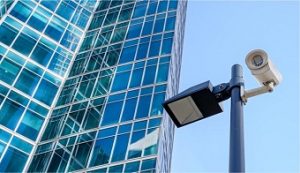
Morphean’s CEO, Rodrigue Zbinden, explores the benefits of hosted video surveillance and access control, and what the growing interest from the IT community might mean for the physical security sector.
Digital transformation continues to have an impact on every industry. In the physical security sphere, traditional CCTV and access control systems that once sat outside the connected world, are being replaced by their intelligent, cloud-enabled equivalents. The tired stand-alone legacy solutions of the past are increasingly being overhauled in favour of the smarter, customisable and scalable digital versions of these technologies. The question then is this: does this represent a new horizon for the physical security industry, or is it an existential threat in the form of a land-grab from the IT sector?
As the tectonic plates, as represented by the physical security and IT industries, continue to converge, it is clear that the underlying responsibility for physical security systems will be questioned. Conscious of the rapidly growing adoption of IoT devices, such as a surveillance camera, and their connection to IT networks and hosted data centres, Morphean commissioned an independent survey into the attitudes and behaviours of 1000 IT decision makers across the UK and Europe. They wanted to gain a better understanding of purchasing intent for evolving security provision in the 2020s.
The results revealed that as many as 84% of IT managers are currently using, or considering using, cloud-based video surveillance (VSaaS) or access control (ACaaS) systems. This points to an appreciation of the convergence of the physical and cyber security realms, and a willingness to embrace the merging of physical devices, connected through the IoT, with existing IT and cloud infrastructure. Of those considering such solutions, nearly 8 in 10 respondents said that integration with existing platforms or emerging technologies would also accelerate VSaaS and ACaaS adoption.
The growing confidence in cloud seems to translate into more positive purchasing intentions around hosted security solutions with 77% of IT managers reporting that physical security is not currently optimised and one in five identifying it as a priority for 2020. Of those considering hosted security solutions, 4 in 5 (79%) anticipate introducing them to their business within a year. The survey also revealed that 36% of IT managers identified operational performance as a priority for improvement within the next year. When we consider the many aspects of operational performance, productivity will always be a key measure, and cloud facilitates leaner decision-making, being more adaptable to the changing business landscape as required.
Cloud-enabled physical security has much potential beyond security. The data collected by network cameras and other physical security devices, combined with other sources of intelligence, can be used for a multitude of different purposes. For example, real-time analysis of visitor numbers, gender and age demographic in a retail store could be cross-referenced with promotional campaigns to gauge effectiveness, or used to identify insights into customer behaviour patterns, such as hot and cold zones. The same platform might ‘learn’ to predict the behaviours that cause queue build-ups, and trigger alerts more readily to advise management that more till staff are needed.
In the transportation industry, intelligent analytics can be used to improve operations across a small fleet of vehicles or an entire transport hub. Cameras and sensors can be integrated on board buses and trains to provide instant images and video footage to control centre personnel, while proactive intruder and loitering alarms employed at busy stations and depots, can deter suspected troublemakers before an incident occurs. People counting technology provides insights which can be used to increase or decrease security provision according to the amount of footfall, or to predict when additional turnstiles should be opened to more effectively manage queuing customers.
For the IT security professional already working with cloud systems and services, the growth in connected digital devices through the IoT is resulting in a growing appetite for physical security, such as network cameras, to enhance existing IT systems and assist business intelligence gathering. And, it is perhaps because of its digital DNA that the IT department is increasingly responsible for physical security purchasing decisions, a relationship historically managed by the fire and security professional who has been slow to adopt digital transformation practices and cloud-based business models.
But we know there is an opportunity for the physical security provider because the IT manager who is well versed in computing protocols may have scant knowledge around maximising the full potential of physical security systems. The challenge is that IT will already have an existing relationship with their own IT solution providers, to whom they may naturally turn to help them with their physical security requirements. It is imperative, therefore, that the physical security provider of today becomes well versed in not only cybersecurity principles but is also able to speak the language of IT in order to successfully compete.
One approach, given the nature of the shifting security landscape, is for IT and physical security vendors to unite in the delivery of a mutually beneficial and overarching solution. This would enable them to pull together their combined expertise to not only offer comprehensive protection of software and systems from a cybersecurity standpoint, but also take care of access control, perimeter protection, surveillance and all aspects of physical security too.
For the IT manager, confident about the security of their cloud provision and committed to optimising physical security within their business, the bringing together of physical and cybersecurity solutions, provided by IT and physical security providers who speak the same language, can only be beneficial, enabling them to meet all of their security requirements. As the threat, both cyber and physical, continues to evolve, vendor partnerships and a joined up strategic approach could well prove to be the best line of defense for today’s businesses.











